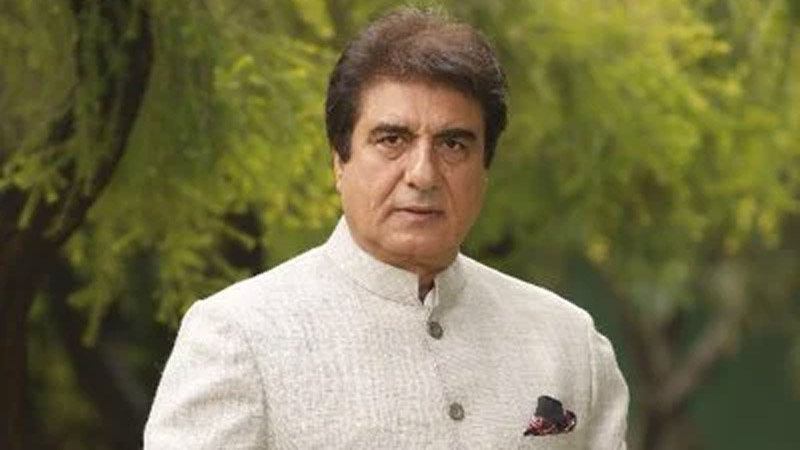Raj Babbar Biography: Life Story, Career, Family, Movies & Achievements

Introduction
Raj Babbar is a celebrated Indian actor and politician known for his powerful performances in Hindi and Punjabi cinema and his influential role in Indian politics. With a career spanning over four decades, Babbar earned a reputation as one of the most intense and versatile actors of the 1980s and 1990s, appearing in classics like Insaaf Ka Tarazu, Nikaah, Prem Geet, and Aaj Ki Awaaz. Later, he successfully transitioned into politics, becoming a prominent member of the Indian National Congress and a three-time Member of Parliament.
Personal Information
- Full Name: Raj Babbar
- Date of Birth: 23 June 1952
- Birthplace: Agra, Uttar Pradesh, India
- Nationality: Indian
- Zodiac Sign: Cancer
Physical Appearance
- Height: 5 feet 10 inches (178 cm)
- Weight: Approx. 78 kg
- Hair Color: Black (now salt & pepper)
- Eye Color: Dark Brown
- Distinctive Feature: Intense eyes and commanding screen presence
Early Life & Family Background
Raj Babbar was born into a middle-class Punjabi family in Agra, Uttar Pradesh.
- His father was a small-scale businessman, and his mother was a homemaker.
- Passionate about acting from a young age, Raj participated in school plays and cultural activities, discovering his talent for dramatic expression early on.
Education Journey
- Completed his schooling in Agra and later graduated from Agra College.
- Pursued formal acting training at the prestigious National School of Drama (NSD), Delhi, where he honed his craft under the guidance of eminent theatre personalities.
- His NSD background gave him a strong foundation in theatre, dialogue delivery, and character development.
Early Career & Theatre Work
- Began his career as a stage actor in Delhi, performing in socially conscious plays and classical dramas.
- Moved to Mumbai in the mid-1970s to pursue films, initially facing the usual struggles of a newcomer in Bollywood.
- His theatre experience helped him stand out for his natural acting style and intense performances.
Bollywood Debut & Rise to Stardom
- Film Debut: Kissa Kursi Ka (1978), a political satire directed by Amrit Nahata.
- Gained critical acclaim with Insaaf Ka Tarazu (1980), where he delivered a chilling performance as a menacing antagonist.
- Quickly rose to fame as a leading man with films like Nikaah (1982), Prem Geet (1981), and Aaj Ki Awaaz (1984), winning praise for his ability to portray both romantic and socially conscious roles.
Bollywood Journey & Iconic Films
Raj Babbar’s versatility allowed him to shine in both mainstream and parallel cinema. Some of his most notable films include:
- Insaaf Ka Tarazu (1980) – Breakthrough role as a cruel antagonist.
- Nikaah (1982) – Played a sensitive, romantic lead in this socially relevant drama.
- Prem Geet (1981) – Memorable romantic performance.
- Aaj Ki Awaaz (1984) – Portrayed a man fighting against injustice.
- Sansar (1987), Ek Chadar Maili Si (1986), and Kalyug (1981) – Critically acclaimed roles in family and parallel cinema.
- The Legend of Bhagat Singh (2002) – Played the role of freedom fighter Kishan Singh.
In addition to Hindi films, Raj Babbar also delivered powerful performances in Punjabi cinema, appearing in classics like Chann Pardesi (1980), Marhi Da Deeva (1989), and Shaheed Uddham Singh (2000).
Political Career
Raj Babbar successfully transitioned from acting to politics in the 1990s:
- Joined the Samajwadi Party in 1994 and served as a Member of Parliament (MP).
- Later became a prominent leader of the Indian National Congress (INC).
- Served as the President of the Uttar Pradesh Congress Committee.
- Represented constituencies such as Firozabad and Fatehpur Sikri in the Lok Sabha.
- Known for his strong oratory skills and dedication to social issues, he continues to play an active role in Indian politics.
Awards & Achievements
- Filmfare Awards: Nominated for Best Actor and Best Supporting Actor for various films during the 1980s.
- Punjab State Award: For contributions to Punjabi cinema.
- Recognized for balancing a successful career in both films and politics—a rare achievement in Indian entertainment.
Personal Life
Raj Babbar’s personal life reflects love, complexity, and resilience:
- Marriage & Family:
- First married Nadira Zaheer Babbar, a renowned theatre actress and daughter of playwright Sajjad Zaheer.
- The couple has two children:
- Juhi Babbar – Actress and theatre artist.
- Arya Babbar – Actor known for his work in Bollywood and Punjabi films.
- Later married Smita Patil, the acclaimed actress, after falling in love during a film shoot. They have one son:
- Prateik Babbar – Actor known for films like Jaane Tu… Ya Jaane Na and Dhobi Ghat.
- Smita Patil tragically passed away shortly after Prateik’s birth in 1986. Raj later reconciled with Nadira and maintained strong family bonds.
- Personality & Interests:
- Known for his dignified and soft-spoken demeanor despite the intensity of his on-screen roles.
- A passionate supporter of theatre and literature, he continues to mentor young actors and remains active in cultural programs.
Legacy & Influence
Raj Babbar stands as a rare example of an actor who successfully bridged the worlds of cinema and politics.
- In films, he is remembered for portraying socially relevant characters with conviction and emotional depth.
- In politics, he is respected for his commitment to public service and grassroots activism.
- His children continue his artistic legacy in both theatre and film, ensuring the Babbar name remains influential in Indian entertainment.
FAQs
Q1: Which was Raj Babbar’s debut film?
A: Kissa Kursi Ka (1978).
Q2: Who are Raj Babbar’s wives?
A: Nadira Zaheer Babbar (theatre actress) and late actress Smita Patil.
Q3: Who are Raj Babbar’s children?
A: Juhi Babbar, Arya Babbar (with Nadira), and Prateik Babbar (with Smita Patil).
Q4: What is Raj Babbar known for in politics?
A: Serving as a Member of Parliament and former President of the Uttar Pradesh Congress Committee.
Q5: Which are Raj Babbar’s most iconic films?
A: Insaaf Ka Tarazu, Nikaah, Prem Geet, Aaj Ki Awaaz, and Chann Pardesi.







